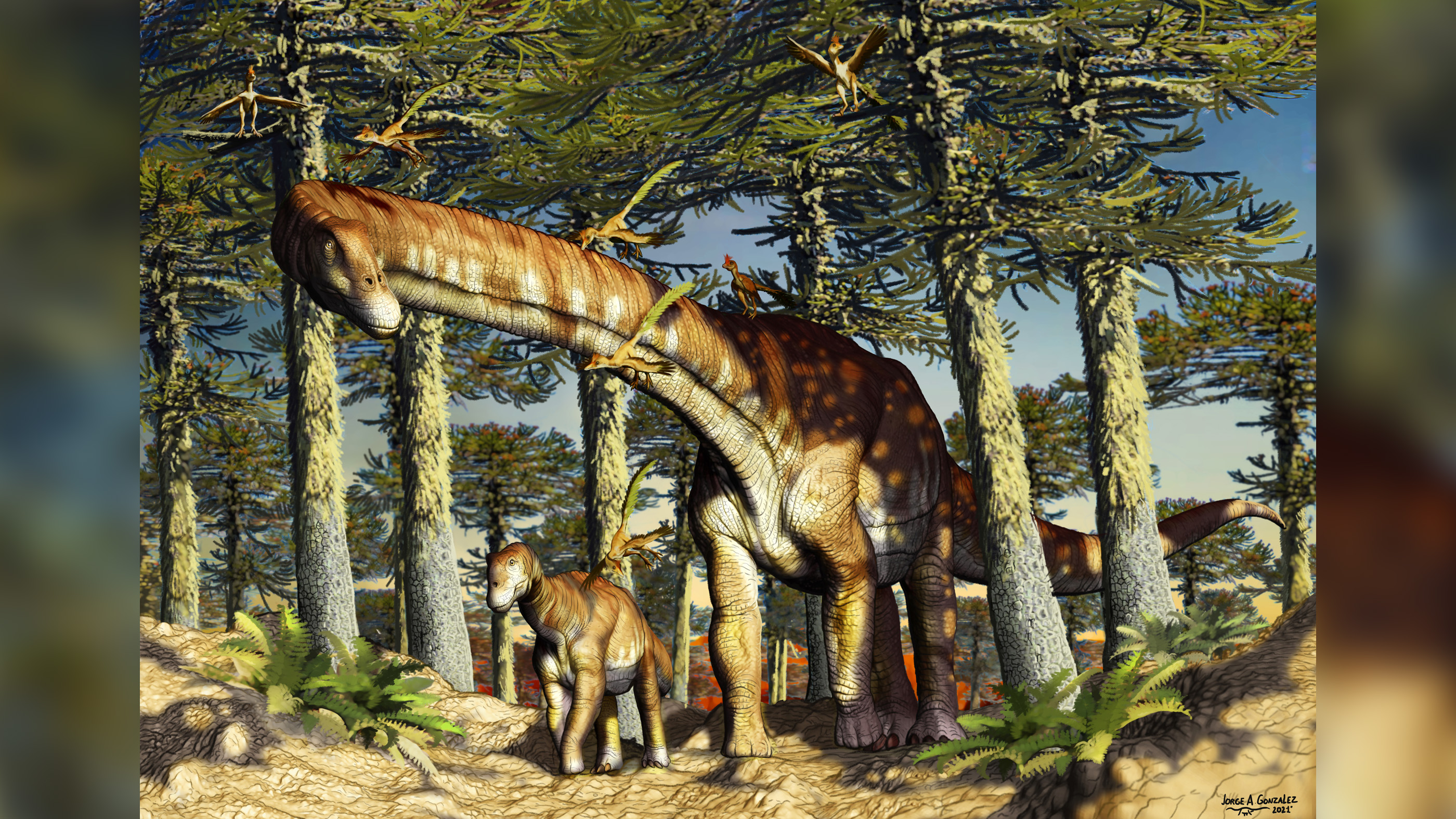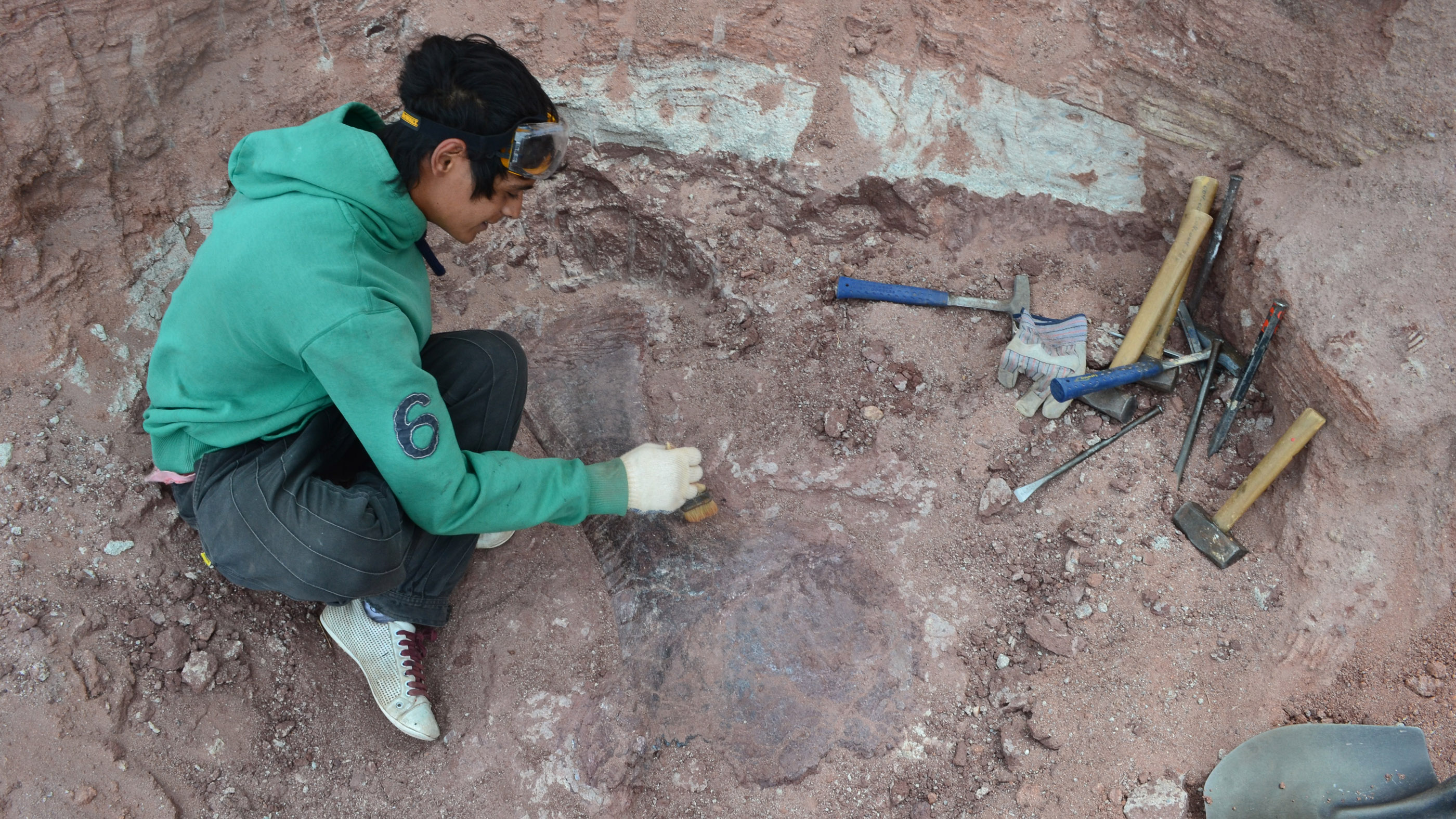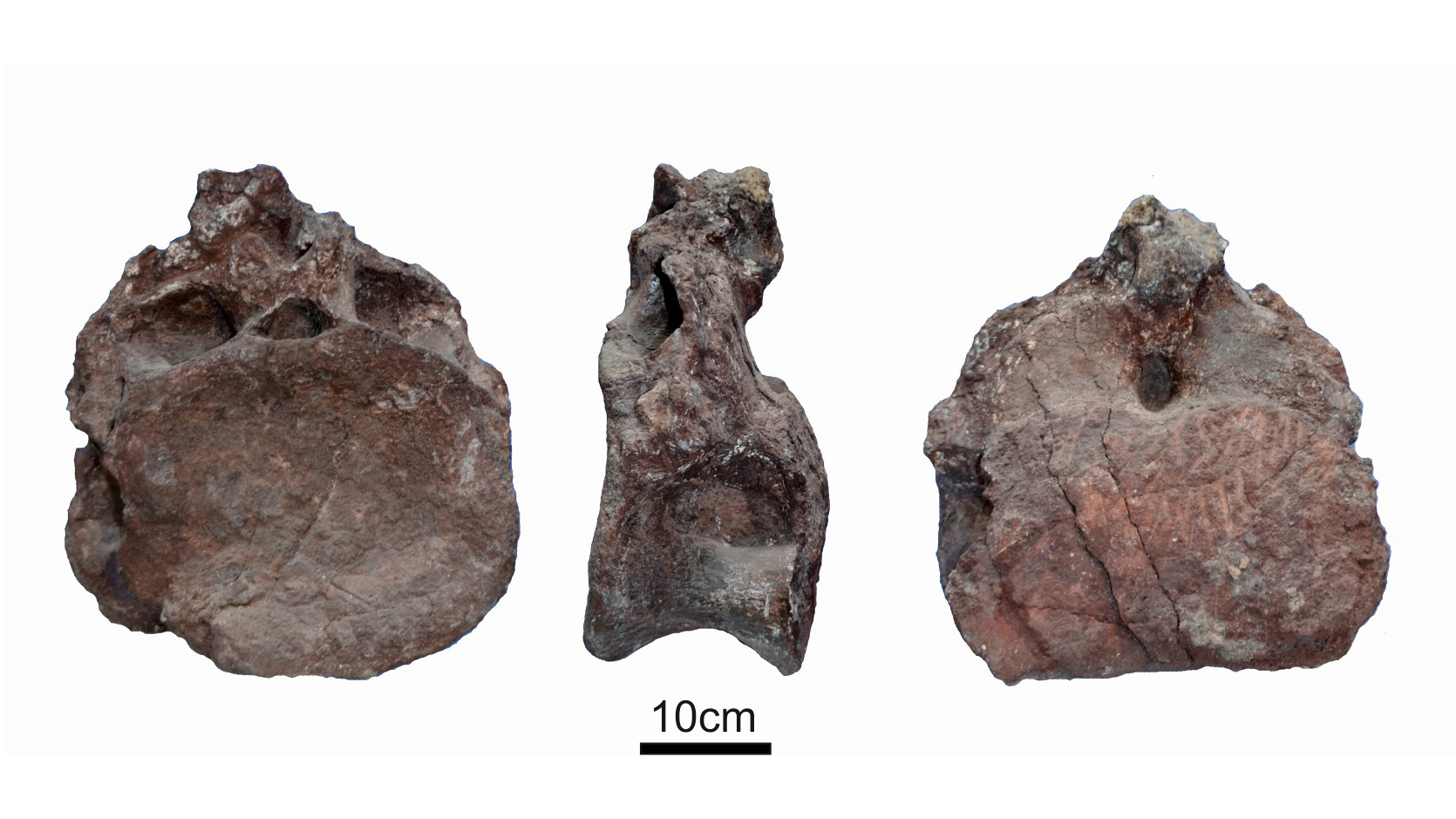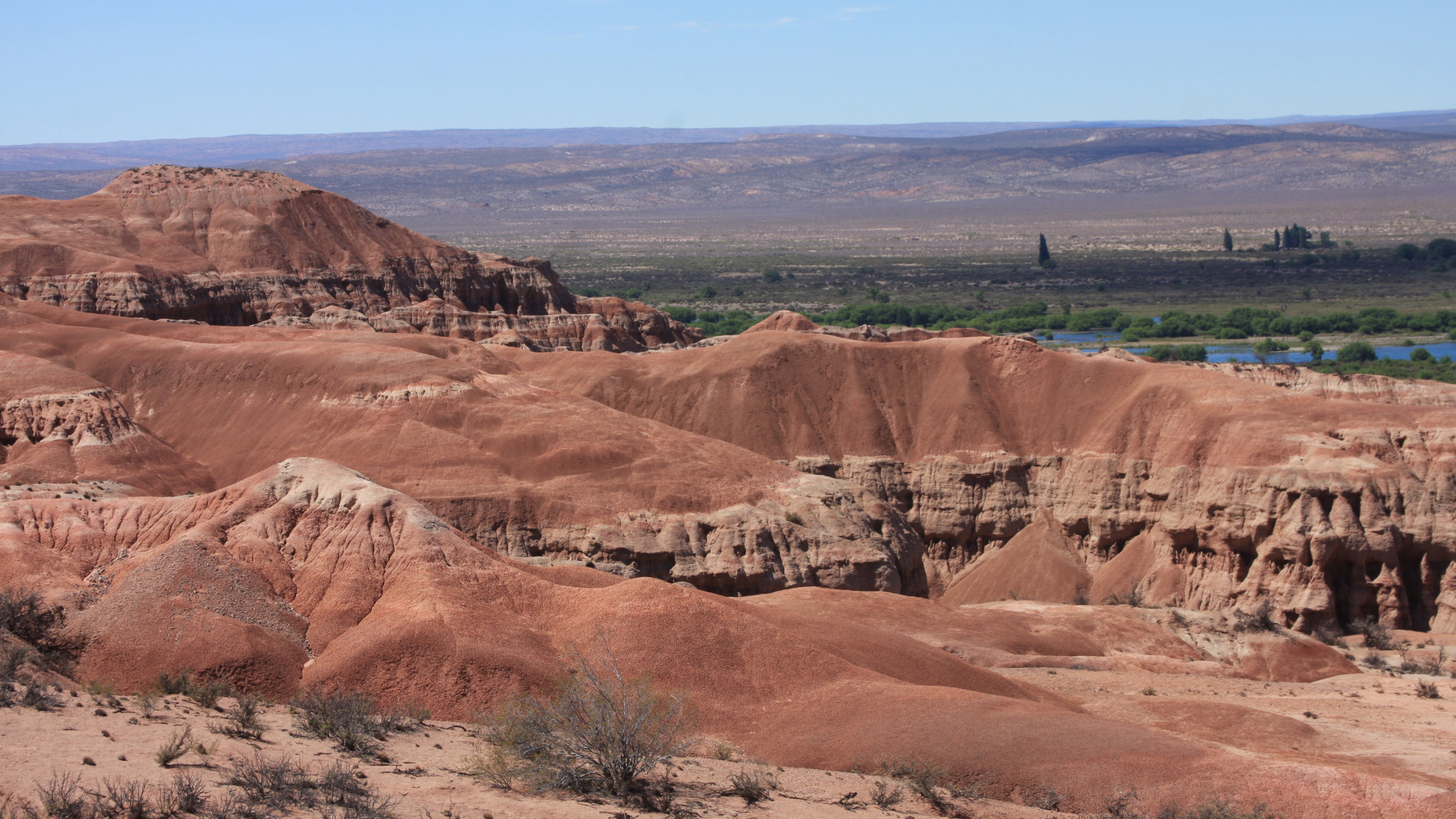This 'Ninja Giant' is the oldest titanosaur on record

A new long-neck dinosaur discovered in Argentina might be the oldest titanosaur ever discovered.
The dinosaur, dubbed Ninjatitan zapati, lived 140 million years ago, which is 20 million years before the appearance of the next known titanosaur species. The discovery suggests that this group of hefty sauropods first emerged on the supercontinent Gondwana, which was made up of what is now South America, Antarctica, Africa, Australia, New Zealand, the Indian subcontinent and Saudi Arabia.
N. zapati was discovered in 2014 by Jonatan Aroca, a technician of El Chocón Museum in Neuquén, Argentina. Aroca was prospecting at a dig site in southwest Neuquén, located in Patagonia. This site was known for sauropod discoveries, and Aroca was searching for new finds outside of previous excavations when he discovered a titanosaur scapula.
Related: Photos: 100-million-year-old Tanzania titanosaur had heart-shaped tail bones
Further excavations turned up some vertebrae, a femur and a fibula (a lower-leg bone). The remains established that the fossils came from a brand-new titanosaur.





Some titanosaurs could grow up to 131 feet (40 meters) in length, but N. zapati was a relative pipsqueak at 66 feet (20 m) long. It still had the column-like legs and long neck and tail of a typical titanosaur, study author Pablo Ariel Gallina, a paleontologist at the National Scientific and Technical Research Council of Argentina, told Live Science.
The researchers named the dinosaur after vertebrate paleontologist Sebastián "Ninja" Apesteguía, who led the first excavations from 2010 to 2014 of the Bajada Colorado Formation where the dinosaur was discovered. Zapati was chosen to honor Rogelio "Mupi" Zapata, a technician of the Museo Municipal Ernesto Bachman, who also made important discoveries at the site.
Sign up for the Live Science daily newsletter now
Get the world’s most fascinating discoveries delivered straight to your inbox.
The discovery puts titanosaurs in the early Cretaceous period in Gondwana, showing that they were already established by this time, Gallina said. Older long-neck dinosaurs have been discovered before, including members of the broader group that titanosaurs are part of, titanosauriforms, which seems to have arisen in the late Jurassic and also includes the brachiosaurids. But N. zapati is the oldest known member of the titanosaur branch of that family tree.
The find confirms what paleontologists had suspected about the group based on their worldwide distribution: that they arose early in Gondwana and then spread. One 2016 study suggested that titanosaurs originated in what is now South America, rapidly spread around Gondwana and later reached Europe via North Africa. By the middle to late Cretaceous, titanosaurs reached North America from South America and Asia via Europe. The new discovery bolsters that hypothesis, Gallina said.
"The Bajada Colorada dinosaur fauna represents one of the most diverse and unique associations not previously documented from the lowermost Cretaceous deposits worldwide, a moment in dinosaur evolution little explored," he wrote in an email to Live Science.
Neuquén province has turned up many intriguing titanosaurs, including one yet-unnamed specimen discovered in January that might be the heaviest titanosaur on record. Paleontologists aren't done excavating the new specimen, but its competition, Patagotitan mayorum, probably weighed 69 tons (62 metric tons), meaning it was more than 10 times heavier than an African elephant.
Originally published on Live Science.

Stephanie Pappas is a contributing writer for Live Science, covering topics ranging from geoscience to archaeology to the human brain and behavior. She was previously a senior writer for Live Science but is now a freelancer based in Denver, Colorado, and regularly contributes to Scientific American and The Monitor, the monthly magazine of the American Psychological Association. Stephanie received a bachelor's degree in psychology from the University of South Carolina and a graduate certificate in science communication from the University of California, Santa Cruz.










